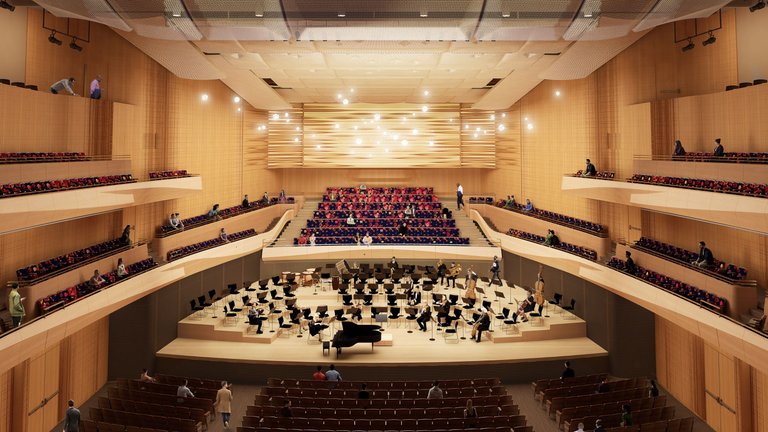
https://www.nytimes.com/2022/09/29/arts/music/david-geffen-hall-reopening-lincoln-center.html
Look closely at the photographs of the orchestra on stage. What is the backdrop? The walls surrounding this supposedly Symphonic acoustic design are slats of combination diffusion and absorption, like the walls surrounding the audience in my favorite Chamber Hall, Zankel. This is a MISTAKE for Classical music.
The paying audience has to be satisfied, but the musicians of a large ensemble can't possibly play their best unless they can hear each other, and that requires smooth and solid walls to reflect the sound and direct it from musician to musician. They can also benefit from a relatively low ceiling or acoustic reflectors over their heads as in the prior acoustic design, which appear to be missing in this one.
Further, the more reflection, the more sound is delivered to the audience; and close reflectors (<4 meters) increase the intimacy of the sound, drawing you into the musical conversation.
Diffusion and absorption around the stage is a design for amplified music, where control of feedback from louspeakers to microphones determines how much amplification is possible; but it will be an inpediment to symphonic players.
I believe in ther sincerity of the patrons, organizers and acoustic designers - after all, they FINALLY ADMITTED, after three failed iterations, that Fisher Hall was TOO DAMNED BIG for good acoustics, and narrowed it, reducing the seating plan. They also spent tens of $Millions installing custom wooden diffusion in the side walls where it belongs, bettering the Starr Theater at Tully Hall where world leading acousticians Joffe-Holden were hamstrung during the re-model and could not fix the wolf tones.